#ConnectedAutonomousVehicles
Explore tagged Tumblr posts
Text
Machine Learning for Autonomous Vehicles
October 19, 2023
by dorleco
with no comment
Autonomous Vehicle Technology
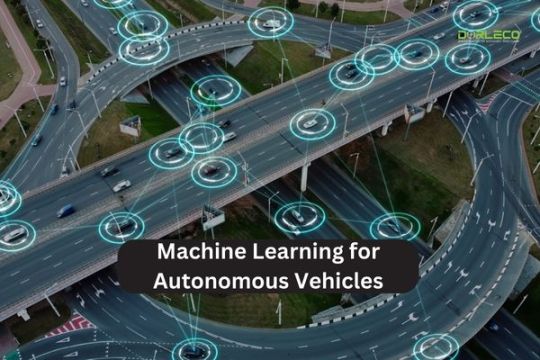
Introduction
Machine learning has greatly aided in developing and operating autonomous vehicles (AVs). Autonomous vehicles, also known as self-driving cars, can navigate and make decisions about how to drive on their own thanks to sensors, cameras, radar, and other equipment. The massive amount of data generated by these sensors is processed by machine learning algorithms to guarantee that the automobile is driven safely and effectively. This article provides a summary of machine learning’s use in autonomous vehicles.
1. Data gathering and sensors
Various sensors, including LiDAR, radar, cameras, and ultrasonic sensors, are included in autonomous cars.
These sensors gather information about the environment around the car, including the state of the roads, the presence of other vehicles, pedestrians, and traffic lights.
2. Data Preparation
Redundancy and noise are frequently present in raw sensor data. The data is cleaned and pre-processed using machine learning algorithms.
This could entail operations like data filtering, data alignment, and sensor fusion to merge data from several sensors.
3. Observation
For activities requiring perception, machine learning models are utilized to comprehend the surroundings of the vehicle.
Algorithms for object detection and recognition locate and categorize nearby items like other cars, people, and traffic signs.
Semantic segmentation classifies each pixel in an image or point cloud to help understand the road scene.
4. Regionalization
Orientation and position must be precisely determined by autonomous vehicles.
Utilizing methods like SLAM (Simultaneous Localization and Mapping), machine learning can aid in localization when combined with sensor data.
5. Planning and managing the path
The path and motion of the vehicle are planned using machine learning.
Algorithms for path planning assist the vehicle in deciding where to go and how to get there while avoiding hazards and obeying traffic regulations.
Control algorithms guarantee that the vehicle follows the intended path effectively and safely.
6. Reinforcement Learning:
For autonomous vehicles to learn from their interactions with the environment, reinforcement learning can be used.

7. Human-AI Interaction:
In autonomous vehicles, machine learning models can also be utilized to communicate with humans by comprehending their requests and explaining AI choices.
8. Data annotation and labeling:
For the purpose of training ML models in autonomous vehicles, high-quality labeled data is crucial.
The process of human annotators marking specific objects and events in sensor data is known to be labor-intensive and time-consuming.
Advantages of Machine Learning for Autonomous Vehicles
Autonomous vehicles (AVs) can benefit greatly from machine learning, which increases their capabilities, productivity, and safety. Some of the main benefits of applying machine learning to autonomous vehicles are as follows:
Enhanced Object Detection and Perception:
Large volumes of sensor data may be processed by ML algorithms, improving the detection and identification of items like pedestrians, cars, and barriers by AVs.
These algorithms improve the vehicle’s ability to perceive by adjusting to different lighting and weather situations.
Making decisions instantly:
Using historical data and their sense of the environment, AVs are able to make decisions in real-time.
When unexpected things happen, such as sudden stops or the sudden presence of pedestrians, they can respond fast.
Increased Safety:
Machine learning systems in autonomous vehicles allow them to anticipate potential dangers and take preventative action to avoid collisions.
Additionally, they can keep an eye on their surroundings constantly, lowering the possibility of driver inattention and fatigue.
Planning a path efficiently:
Algorithms for path planning based on machine learning can optimize routes to increase fuel efficiency, cut down on travel time, and lessen wear and tear on the vehicle.
AVs have the ability to dynamically change their routes based on the current flow of traffic.
Adaptive Learning:
AVs can adapt to their driving environments and learn from them thanks to machine learning. Based on facts from the real world, they may continuously enhance their performance and decision-making.
Reduced Human Error:
Human errors, which are a major factor in traffic accidents, such as distracted driving, fatigue, or poor judgment, are not common in autonomous vehicles.
Traffic Management:
By coordinating AVs and enhancing general traffic management, machine learning can be utilized to improve traffic flow.
To ease congestion, AVs can communicate with one other and the traffic infrastructure.
Reduced Fuel Consumption and Emissions:
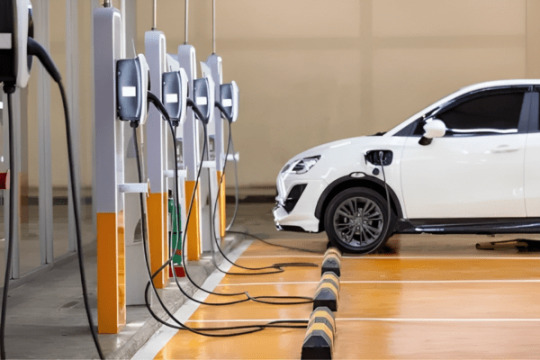
Disadvantages of Machine Learning for Autonomous Vehicles:
While machine learning has many benefits for autonomous vehicles (AVs), there are also a number of serious drawbacks and difficulties that come with its application in this setting:
Safety Concerns:
ML models are unreliable and susceptible to errors, raising questions about AV safety. A machine learning algorithm’s poor choice could have fatal repercussions.
Lack of Common Sense:
Lacking common sense reasoning, ML models may find it difficult to comprehend complicated, unstructured circumstances when driving.
Data Quality and Diversity:
High-quality and varied training data are essential to machine learning models. It might be difficult to ensure that data adequately depicts all conceivable circumstances, including uncommon and edge cases.
Data Annotation Costs:
Given the enormous amount of data needed for AV development, labeling and annotating training data for ML models can be expensive and time-consuming.
Data Privacy Concerns:
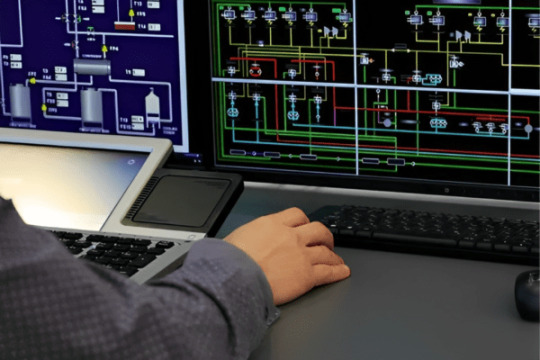
Adversarial Attacks:
Adversarial attacks, in which hostile actors try to trick or manipulate the algorithms by giving false sensor data, can affect machine learning models in AVs.
Limited Robustness:
ML models may not generalize well, and as a result, they may not perform well in unexpected or uncommon circumstances that differ from their training data.
Regulatory Challenges:
Machine learning-based AV development and deployment require navigating complicated regulatory environments, some of which may not yet be fully responsive to this cutting-edge technology.
Conclusion:
In conclusion, ML is a transformative technology that plays a central role in the development and operation of autonomous vehicles (AVs). Its integration brings a multitude of benefits and challenges to the world of transportation.
As the industry continues to evolve, it is essential to address these challenges and harness the advantages of ML in autonomous vehicles responsibly. Collaboration between industry stakeholders, regulators, researchers, and the public is crucial to ensure that AVs become a safe, efficient, and accessible mode of transportation that benefits society as a whole. While there are hurdles to overcome, the potential for ML in autonomous vehicles remains promising, with the prospect of revolutionizing the way we travel and enhancing road safety.
#AutonomousAerialVehicles#Drones#AAVs#KeylessEntry#HybridVehicle#StartSystems#dorleco#controlsystem#ADAS#eMobilityControls#stroke#automotive#controlunit#PowertrainControl#ConnectedAutonomousVehicles
0 notes
Text
Autonomous Aerial Vehicles (Drones)
October 17, 2023
by dorleco
with no comment
Autonomous Vehicle Technology
Edit

Introduction
Drones, or autonomous aerial vehicles (AAVs), have grown in popularity in recent years due to their adaptability and variety of uses. The military usage of these unmanned aircraft has given way to a number of civilian and business uses. The main features of AAVs, including their types, components, uses, and some of the difficulties they offer, will be covered in this introduction.
1. Different AAV types
Autonomous Aerial Vehicles come in a variety of forms, each created for particular purposes and settings. The most typical categories are:
Multirotor Drones: These drones, which often have four or more rotors, are distinguished by their stability, agility, and controllability. They are frequently employed for short-distance deliveries, surveillance, and aerial photography.
Fixed-Wing Drones: These drones have fixed wings and propellers, making them resemble conventional airplanes. They are frequently employed for jobs like mapping, agriculture, and aerial surveying since they are more effective for traveling large distances.
Hybrid Drones: Providing flexibility for varied applications, hybrid drones integrate aspects of both multirotor and fixed-wing designs. They can fly forward efficiently like fixed-wing aircraft and can take off and land vertically like multi-rotors.
Single-rotor and coaxial helicopters: Though less prevalent, these drones excel at a variety of specialized jobs, including heavy lifting and aerial filming.
2. Important Elements:
Autonomous Aerial Vehicles are made up of several crucial parts:
Propulsion System: The drone’s propulsion system consists of the motors, rotors, or engines that give it lift and forward motion.
Flight Controller: An onboard computer that regulates the speed of each motor or rotor to steady and control the drone’s flight.
GPS receiver: Offers location information and aids in self-driven navigation.
Sensors: To ensure stable flying and collision avoidance, drones are outfitted with a variety of sensors, including gyroscopes, accelerometers, barometers, and obstacle avoidance sensors.
Communication System: Drones frequently interact with ground stations or other drones to coordinate missions and are controlled remotely via radio signals.
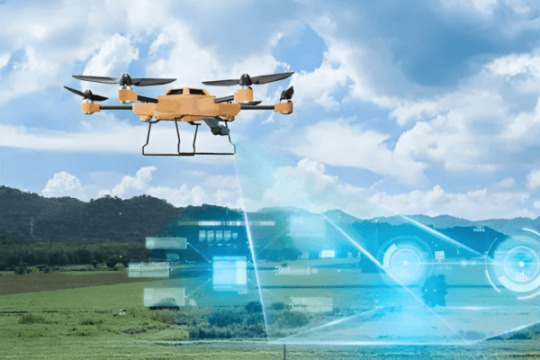
Power Source: Rechargeable lithium-polymer or lithium-ion batteries are used to power the majority of drones.
3. Applications
Autonomous Aerial Vehicles have numerous uses in a variety of sectors, including:
Photography and Videography: Aerial photography and cinematography for movies, real estate, and events are examples of photography and videography.
Agriculture: Precision farming, pesticide application, and crop monitoring.
Search and Rescue: Supporting efforts to find missing people and provide disaster aid.
Infrastructure Inspection: Inspection of the infrastructure, including pipelines, bridges, and electricity lines.
Environmental monitoring: keeping an eye on deforestation, climate change, and wildlife.
Package Delivery: Businesses like UPS and Amazon are looking into drone delivery options.
Security and surveillance: Keeping an eye on vast areas for security reasons.
Mapping and Surveying: Producing detailed 3D maps and measuring land.
4. Difficulties
Autonomous Aerial Vehicles are faced with a number of difficulties as they develop:
Regulation: Different regions have different laws and rules, which can make drone operations challenging.
Safety: Collisions, problems, and loss of control can result in mishaps that put persons and property in danger.
Privacy Issues: The possibility of intrusive surveillance is a major issue.
Airspace Management: To prevent collisions, drone flight paths must be coordinated with those of other aircraft.
Battery Life: For the majority of drones, a short battery life limits flight time and range.
Impact on the environment: Particularly in urban areas, noise pollution, and environmental concerns might be problems.
Benefits of Autonomous Aerial Vehicles (Drones)
Drones, or autonomous aerial vehicles (AAVs), provide numerous advantages in a variety of fields and applications. The following are some of the main benefits of Autonomous Aerial Vehicles:
Cost-Effective: AAVs may frequently complete jobs more affordably than conventional techniques. Drones, for instance, may more precisely administer pesticides and monitor crops in agriculture, minimizing the need for expensive machinery and physical labor.
Time Efficiency: AAVs are capable of doing jobs swiftly and effectively. For example, they can undertake aerial photography, evaluate infrastructure, or survey enormous amounts of land in a fraction of the time it would take using conventional techniques.
Safety: By using AAVs in dangerous or hard-to-reach places, the risk to human employees is reduced. For instance, they can carry out perilous search and rescue missions, and inspect electricity lines, and pipelines.
Environmental Benefits: When compared to conventional aircraft or ground vehicles, drones have a lesser environmental impact. They are more environmentally friendly because they frequently use electric power sources, produce fewer pollutants, and have lower noise levels.
Precision and Accuracy: In industries like agriculture, where precise crop spraying and monitoring can improve yields and save waste, AAVs’ high precision and accuracy in task execution are essential.
Remote sensing and surveillance: Drones can continuously observe a region, improving security and monitoring capabilities. They are employed in disaster management, animal monitoring, and border security.
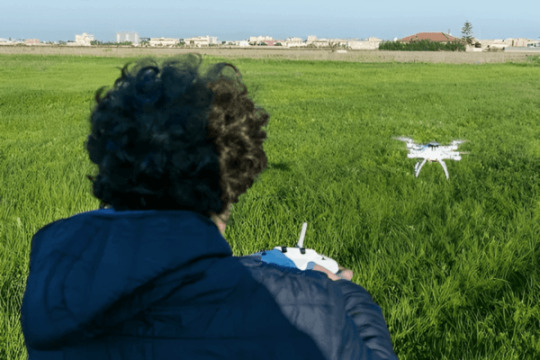
Flexibility and Adaptability: AAVs are adaptable to a wide range of applications since they may be fitted with a variety of sensors and payloads. They don’t require major changes to be configured for various jobs.
Aid in Emergencies: Drones can be quickly deployed in disaster-affected areas to survey damage, find survivors, and provide supplies that are necessary in an emergency. They are essential resources for search and rescue operations.
Drawbacks of Autonomous Aerial Vehicles (Drones)
Drones, or autonomous aerial vehicles (AAVs), have many advantages but also a number of disadvantages and difficulties. To use drones effectively, it’s imperative to be aware of these restrictions. The following are some AAV drawbacks:
Regulatory Obstacles: AAVs must adhere to stringent rules in several nations. These rules encompass things like required licenses, no-fly zones, and flight height. It might be difficult to follow these regulations, particularly for industrial and recreational users.
Safety Issues: Drones can provide dangers to safety both on the ground and in the air. Inexperienced pilots run the risk of endangering both persons and property when they unintentionally cause accidents, such as collisions with other planes or buildings.
Privacy Concerns: Drones with cameras and other sensors pose the risk of invading people’s personal space. Significant issues include the gathering of personal data and unauthorized surveillance. It can be difficult to strike a compromise between drones’ advantages and people’s right to privacy.
Limited Payload Capacity: The majority of consumer-grade drones have a payload capacity that limits their ability to do specific jobs, such as carrying large scientific instruments or heavy cargo.
Short Battery Life: Drones have a short battery life, which for consumer versions typically falls between 20 and 40 minutes. This limits their operating range and duration and necessitates frequent charging.
Weather Sensitivity: A drone’s capacity to fly safely and effectively might be restricted by unfavorable weather conditions, such as high winds, heavy rain, and extreme temperatures.
Maintenance and Repairs: Regular maintenance is necessary for drones, and any faults may call for pricey repairs. Downtime and increased expenses may result from this.
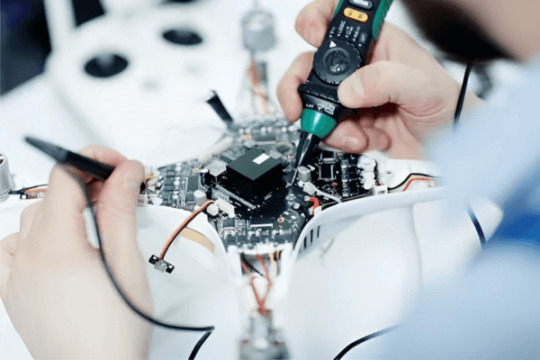
Complex Operation: Despite the fact that current drones are easier to handle, they still need a certain amount of expertise to operate efficiently. For novices, learning how to fly and operate a drone might be difficult.
Conclusion:
In conclusion, Autonomous Aerial Vehicles (AAVs), more commonly known as drones, have emerged as versatile tools with a wide range of applications and the potential to bring transformative changes to various industries. The benefits of AAVs, including cost-effectiveness, time efficiency, safety, and environmental advantages, are evident and compelling. These devices have the power to revolutionize fields such as agriculture, infrastructure inspection, surveillance, and emergency response, among others.
However, Autonomous Aerial Vehicles are not without their drawbacks and challenges. Regulatory complexities, safety concerns, privacy issues, and operational limitations are factors that demand careful consideration and responsible usage.
The future of AAVs hinges on a harmonious balance between realizing their full potential and addressing these challenges. As technology advances and regulations evolve, drones will continue to play an increasingly significant role in our lives. To harness the full spectrum of benefits AAVs offer, it is crucial to emphasize education, ethical practices, and responsible governance. With the right approach, drones can indeed be transformative tools, enhancing efficiency, safety, and our ability to explore and interact with the world from a new perspective.
#AutonomousAerialVehicles#Drones#AAVs#KeylessEntry#HybridVehicle#StartSystems#dorleco#controlsystem#ADAS#eMobilityControls#stroke#automotive#controlunit#PowertrainControl#ConnectedAutonomousVehicles
0 notes
Text
Autonomous Vehicle Hardware
October 16, 2023
by dorleco
with no comment
Autonomous Vehicle Technology
Edit
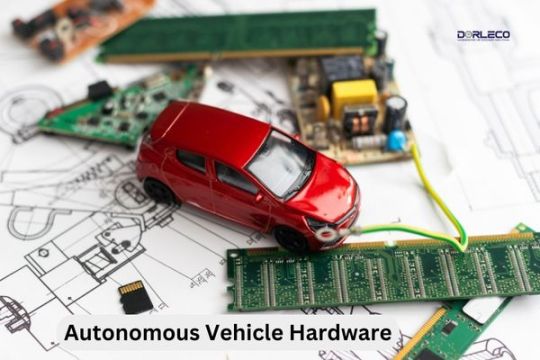
Introduction
Self-driving cars, also known as autonomous vehicles, are a cutting-edge technology that has the potential to revolutionize transportation while also making our roadways safer and more effective. For autonomous operation and navigation, these vehicles rely on a combination of hardware and software components. In this introduction, we’ll concentrate on the Autonomous Vehicle Hardware elements that are essential to autonomous vehicles’ proper operation.
1. Sensors:
A variety of sensors are installed in autonomous cars to give them information about their surroundings. These sensors consist of:
LiDAR (Light Detection and Ranging): LiDAR sensors produce thorough 3D maps of the surroundings of the vehicle using laser pulses. The location and movement of adjacent objects, pedestrians, and other cars are better understood by the vehicle thanks to these maps.
Radar: Radio waves are used by radar devices to measure an object’s speed and distance. Because they are less impacted by rain, fog, or snow than LiDAR is, they are especially helpful in bad weather.
Cameras: High-resolution cameras record the environment on film and in still photos. These photos are processed by sophisticated computer vision algorithms in order to distinguish pedestrians, read road signs, and identify objects.
Ultrasonic Sensors: Ultrasonic sensors use sound waves to go from the vehicle to adjacent objects, and then they time how long it takes for the sound to return.
GPS: For localization and navigation, use the Global Positioning System (GPS). It aids accurate navigation by giving the car information about its precise location.
2. Computing Hardware:
Central Processing Unit (CPU): Autonomous Vehicle Hardware comes with potent CPUs that can process massive volumes of data in real-time. The software that analyzes sensor data and decides how to maneuver the car is run by these CPUs.
Graphics Processing Unit (GPU): GPUs are used to speed up the processing of visual activities like image recognition and computer vision that need sophisticated visual input.
FPGA (Field-Programmable Gate Array): Field-Programmable Gate Arrays, or FPGAs, are hardware elements that may be reprogrammed to perform particular functions. They are utilized for signal processing and real-time control.
Sensor Fusion Units: These units fuse data from numerous sensors to build a full picture of the world around the vehicle. Making safe driving judgments depends on this.

3. Control Systems:
Actuators are in charge of regulating the vehicle’s movement, including steering, braking, and acceleration. They are necessary for carrying out the decisions made by the software of the autonomous vehicle.
Drive-By-Wire Systems: Drive-by-wire systems, which switch out conventional mechanical connections for electronic controls, are a common feature of autonomous vehicles. As a result, the control system and the vehicle’s components are able to communicate and be controlled precisely.
4. Systems for Communications:
Vehicle-to-Everything (V2X) communication allows for vehicle-to-vehicle communication as well as communication with other cars and infrastructure like traffic signals and road signage. The exchange of information can improve traffic flow and safety.
5. Systems for redundancy and safety
To protect safety, autonomous cars frequently have redundancy and backup systems. This includes extra sensors, backup power systems, and fail-safe devices.
6. HMI: Human-Machine Interface
The HMI serves as the interface for users and passengers to communicate with the car. It has user-friendly features including displays, speech recognition, and others.
Benefits of Autonomous Vehicle Hardware
Autonomous vehicle hardware has a number of advantages in terms of efficiency and safety, which is what is causing this ground-breaking technology to be developed and adopted. The following are a few of the major advantages of autonomous vehicle hardware:
1. Increased Safety:
Reduced Human Error: The major causes of accidents such as driver weariness, distraction, and faulty judgment are not common in Autonomous Vehicle Hardware. Hardware elements like sensors and cameras let vehicles make judgments more quickly and accurately, lowering the chance of accidents.
Advanced Sensor Technology: LiDAR, radar, and video systems with advanced sensor technology offer a 360-degree view of the area around the vehicle, seeing obstacles and potential risks instantly. The improved perception and attentiveness make driving safer.
Better Reaction Time: Compared to human drivers, autonomous vehicles can react to problems considerably more quickly. They have the ability to process data in milliseconds and swiftly and precisely carry out directives like braking or steering.
Predictive Analysis: Machine learning algorithms, which are a component of the hardware and software stack, may examine previous data and forecast potential mishaps or hazards, enabling the vehicle to take preventative action to avoid them.
2. Reduced Traffic Congestion:
Effective traffic flow is possible thanks to autonomous cars’ ability to communicate with one another and with traffic infrastructure. This connectedness may result in less congestion, smoother traffic flow, and more overall transportation effectiveness.
GPS and traffic information can be used to choose the fastest routes in real time, avoiding gridlock and congestion.
3. Reduced fuel use and emissions:
Driving Pattern Optimization: To cut down on fuel use and pollution, autonomous cars can make the best use of their acceleration and deceleration strategies.
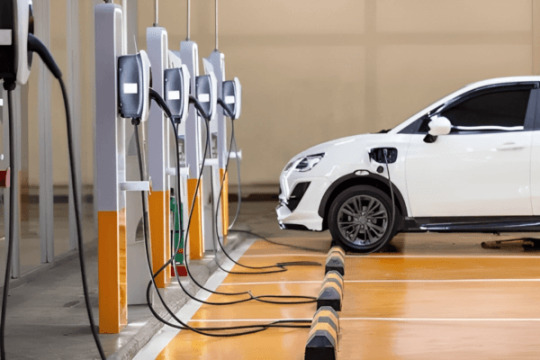
4. Accessibility:
Enhanced Mobility: Using Autonomous Vehicle Hardware can provide accessibility and freedom for people who are unable to drive due to age, disability, or other reasons.
Transportation on Demand: Ride-sharing and autonomous taxi services can provide comfortable transportation on demand to a wider spectrum of consumers.
5. Reduced Fatalities and Traffic Accidents:
The number of traffic accidents and consequent fatalities can be greatly decreased by doing away with human error and implementing cutting-edge safety measures.
6. Efficiency of Parking
Passengers can be dropped off at their destination by Autonomous Vehicle Hardware, which can then locate parking on their own. This may result in less urban congestion and more effective utilization of parking spaces.
7. Transportation as a Service:
With the introduction of autonomous vehicle fleets run by ride-sharing or transportation service providers, fewer people could need to buy their own cars, which might reduce traffic and save people money.
8. Improved Traffic Management:
In order to improve the administration of traffic signals and congestion, autonomous vehicles can contribute useful data to traffic management systems.
Drawbacks of Autonomous Vehicle Hardware
Autonomous Vehicle Hardware has many benefits, but there are also several serious disadvantages and difficulties with the technology. For autonomous vehicles to be widely used, these drawbacks and issues must be resolved. Here are a few negatives:
1. Cost:
Autonomous Vehicle Hardware, such as cutting-edge sensors, potent CPUs, and redundant systems, can be pricey. Both consumers and producers may find this price to be a substantial barrier to entry.
2. Complexity:
Autonomous Vehicle Hardware and software are quite complicated. These systems can be difficult to maintain, debug, and repair, and they can be expensive.
3. Reliability:
Although safety and redundancy are considered when designing autonomous vehicle technology, system failures or malfunctions are still a possibility. A crucial priority is ensuring the dependability and safety of every piece of gear.
4. Cybersecurity:

5. Ethical Conundrums:
When faced with moral dilemmas, autonomous vehicles may have to decide between protecting their passengers or pedestrians in an accident. Discussions about how to handle these moral conundrums are ongoing.
6. Replaced Employment:
The widespread use of autonomous cars in sectors like logistics and transportation could result in employment losses. Professional drivers, such as taxi and truck drivers, may encounter difficult employment situations.
7. Infrastructure Acceptance:
It’s possible that the current road system isn’t fully prepared to support autonomous vehicles. It could be expensive and time-consuming to upgrade the infrastructure to enable V2X connectivity and other functionalities.
8. Concerns about data privacy:

Conclusion:
In conclusion, the Autonomous Vehicle Hardware is a critical component of the emerging technology that promises to reshape transportation and enhance our daily lives. These vehicles are equipped with a sophisticated array of sensors, computing systems, control units, and communication devices that enable them to operate safely and efficiently without human intervention. The benefits of autonomous vehicle hardware include improved safety, reduced traffic congestion, lower fuel consumption, increased accessibility, and the potential for significant cost savings.
However, alongside these advantages, there are noteworthy challenges and drawbacks that must be addressed. These include the high cost of hardware, complexity, reliability concerns, cybersecurity risks, regulatory and legal hurdles, and the need to gain public acceptance and trust.
The development and adoption of autonomous vehicle hardware represent a transformative journey that requires collaboration between technology companies, automakers, governments, and the public. As technology continues to advance, it is essential to prioritize safety, address ethical dilemmas, and work toward an inclusive and sustainable future for autonomous vehicles. The balance between the advantages and challenges will ultimately determine the extent to which autonomous vehicles become a part of our daily lives and the extent to which they revolutionize transportation.
#KeylessEntry#HybridVehicle#StartSystems#dorleco#controlsystem#ADAS#eMobilityControls#stroke#automotive#controlunit#PowertrainControl#ConnectedAutonomousVehicles
0 notes
Text
Connected Autonomous Vehicles (CAVs)

Introduction
The term “connected autonomous vehicles” (CAVs), sometimes known as “autonomous cars” or “self-driving cars,” denotes a revolutionary advancement in both automotive and transportation systems. These cutting-edge vehicles incorporate cutting-edge technology to enable them to function without human intervention and are connected to both the internet and the larger transportation system. CAVs promise to make transportation safer, more effective, and more convenient while ushering in a new era of mobility.
Connected Autonomous Vehicles range from somewhat autonomous to fully autonomous in terms of automation. They use a variety of sensors, cameras, lidar, radar, and sophisticated algorithms to sense their environment and make judgments in real time.
These vehicles can handle congested intersections, navigate through traffic, and adapt to shifting road conditions, thereby lowering the likelihood of accidents brought on by human mistakes.
CAV connection is an equally important component. These cars have communication systems that let them share information with other CAVs, traffic control systems, and even the gadgets of pedestrians. Through interactions between vehicles and infrastructure (V2I) over this communication network, CAVs are able to exchange data about traffic, road conditions, and other topics. The foundation of improved traffic management and safety is this real-time data interchange.
CAVs could have a variety of advantages. As they can react more swiftly and predictably than human drivers, they have the potential to greatly reduce traffic accidents and fatalities. CAVs can reduce traffic congestion by streamlining traffic and giving users quicker paths. Additionally, they might improve accessibility, restoring mobility to those who are unable to drive due to age, disability, or other factors.
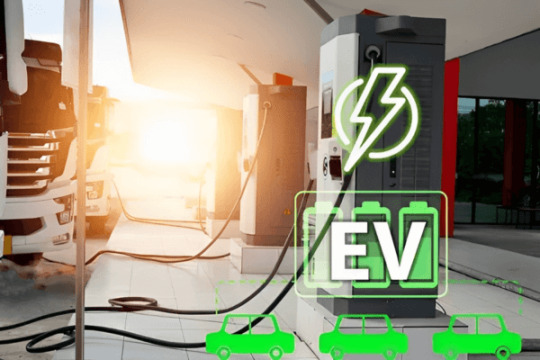
Benefits of Connected Autonomous Vehicles (CAVs)
The use of connected autonomous vehicles (CAVs) has the potential to significantly improve many facets of transportation and society at large. The following are some of the main benefits of CAVs:
Increased Safety: CAVs have the potential to significantly lower traffic fatalities and accidents. They have cutting-edge sensors and algorithms that let them recognize risks and respond to them more swiftly and predictably than human drivers. Additionally, through vehicle-to-vehicle (V2V) and vehicle-to-infrastructure (V2I) connectivity, CAVs can interact with one another and exchange real-time information, improving safety.
Reduced Congestion: CAVs can facilitate smoother traffic flow by coordinating with one another and maximizing speed and spacing. Additionally, they can pick the fastest routes, which will cut down on traffic and the amount of time spent on it. As a result, there may be a decrease in fuel use and greenhouse gas emissions.
Enhanced Accessibility: People who are unable to drive due to age, impairments, or other factors may be able to move around with the help of CAVs. They can provide greater mobility options and newfound independence to a variety of people, including the elderly and those with impairments.
Greater Fuel Efficiency: CAVs can be programmed to operate with less fuel and produce fewer emissions. They can determine the best routes, prevent idling, and smoothly accelerate and brake, all of which improve fuel efficiency.
Reduced demand for Parking: Because Connected Autonomous Vehicles can quickly locate parking places after dropping off passengers, there will be less demand for vast parking lots and garages. This can cut down on time and tension spent looking for parking and free up valuable urban space for other uses.
Economic Benefits: The creation of new jobs in the autonomous vehicle-related sectors of software development, infrastructure construction, and maintenance may result from the development and use of CAVs. Given that people can work or unwind during their commutes, it may also result in higher productivity.
Enhanced Productivity and Quality of Life: CAVs can give passengers time to work, unwind, or partake in recreational activities throughout their travels. This can improve living conditions and increase the effectiveness of transportation.
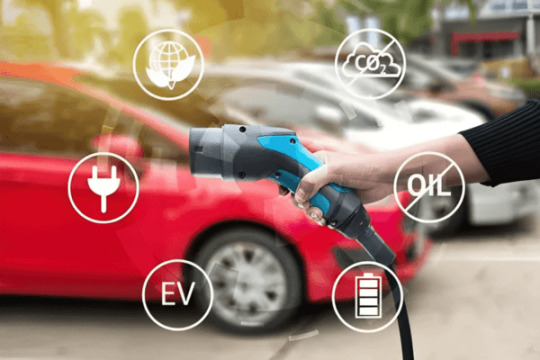
Drawbacks of Connected Autonomous Vehicles (CAVs)
While connected autonomous vehicles (CAVs) have many advantages, there are a number of disadvantages and difficulties as well. Given these constraints, it’s crucial to keep in mind how the technology is evolving and how it’s being integrated into our transportation networks. CAVs have a number of disadvantages, including:
Safety Concerns: Although CAVs may increase traffic safety, they are not impervious to technical difficulties or cyber-attacks. A crucial difficulty is ensuring the security and dependability of autonomous systems. Additionally, there may be new safety issues during the transitional phase when CAVs and human-driven vehicles coexist on the road.
High initial costs: The development and implementation of CAV technology, including the sensors, cameras, lidar, radar, and sophisticated software, can be costly. The early accessibility of CAVs may be limited by this expense, which also necessitates a substantial investment in infrastructure and fleets of vehicles.
Limited Infrastructure Adaptation: The widespread use of Connected Autonomous Vehicles may necessitate significant infrastructure changes, such as new road signs, traffic lights, and increased connectivity. Infrastructure retrofitting can be expensive and time-consuming.
Privacy Issues: In order to function effectively, CAVs collect and send a lot of data. It is necessary to address worries about data ownership, privacy, and potential exploitation by manufacturers or other organizations.
Job displacement: Since autonomous technology eliminates the need for human drivers in sectors like haulage and ride-sharing, it may result in job displacement. The financial effects of job loss and the requirement for retraining and reskilling must be taken into account.
Complex Liability and Regulatory Issues: Complex liability and regulatory issues must be addressed as CAV regulations continue to develop. It can be difficult to determine who is at fault in an accident involving an autonomous vehicle.
Technology Dependence: As society depends more on CAVs, there is a danger of becoming overly dependent on technology. This can be a problem if there are any unanticipated system outages, technical difficulties, or other disturbances.

Conclusion:
Connected Autonomous Vehicles (CAVs) represent a remarkable advancement in the field of transportation, offering the potential to revolutionize the way we move and live. These vehicles, equipped with cutting-edge technology and connectivity, have the capacity to bring numerous benefits to society, such as improved safety, reduced traffic congestion, increased accessibility, and environmental advantages. However, they also come with a set of challenges, including safety concerns, high initial costs, regulatory complexities, and ethical dilemmas, which need to be carefully addressed for the widespread adoption and acceptance of CAVs.
As Connected Autonomous Vehicles technology continues to evolve and mature, collaboration between governments, industry leaders, and research institutions is essential to address these challenges. Safety measures and robust cyber security protocols must be implemented to ensure that CAVs live up to their potential as safer alternatives to human-driven vehicles. Furthermore, the development of clear regulatory frameworks will be pivotal in providing a structured path for CAV integration while protecting the rights and privacy of individuals.
In conclusion, the era of Connected Autonomous Vehicles holds immense promise for transforming the way we experience transportation and enhancing our daily lives. While it comes with its share of complexities and hurdles, the potential benefits, from safer roads to reduced environmental impact and improved accessibility, make the journey towards CAVs an exciting and worthwhile endeavor that will shape the future of mobility and urban living.
#KeylessEntry#HybridVehicle#StartSystems#dorleco#controlsystem#ADAS#eMobilityControls#stroke#automotive#controlunit#PowertrainControl#ConnectedAutonomousVehicles
0 notes